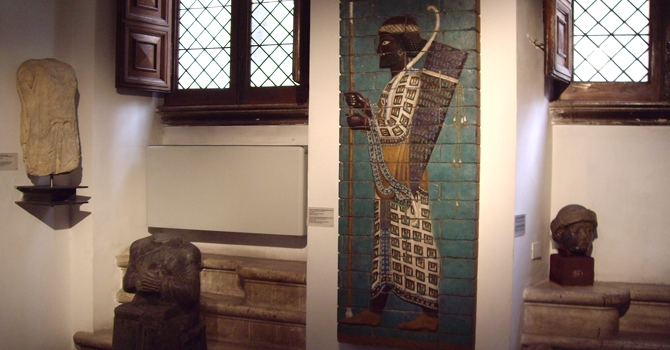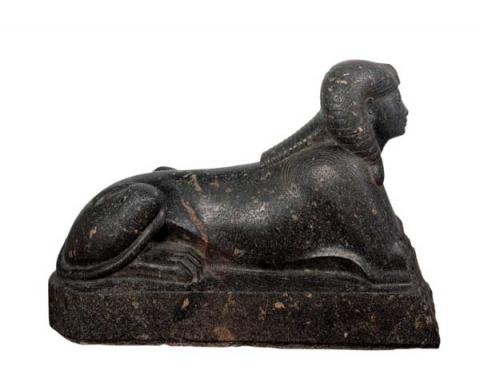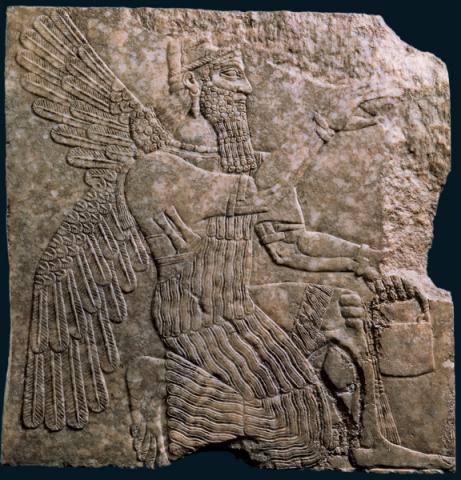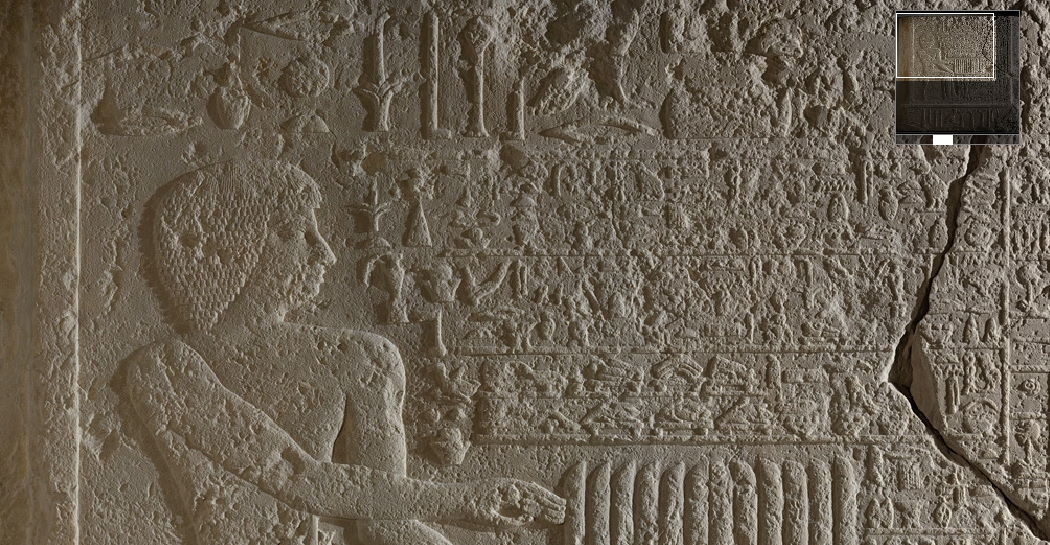Plaster casts Room
To complete his collection of Egyptian and Mesopotamian artworks, Giovanni Barracco also collected a series of works owned by other museums.

Of great importance is the set of documents referring to prince Gudea of Lagash (2150-2125 B.C.). They are copies of works excavated in the last decades of the 19th century by E. de Sarzec at Tello (the ancient Girsu, in Iraq), a religious center in the kingdom of Lagash.
These pieces, preserved at the Louvre, depict prince Gudea, a sovereign of the second Lagash dynasty who is well documented for his intense activity of erecting temples dedicated to the highest deities worshipped in the region.
In particular, the headless seated statue, a cast of the original in diorite, has a long cuneiform inscription that says the sovereign was the architect of the temple of Ningirsu, whose floor plan is shown on the tablet resting on his knees. The statue shows the prince in a ceremonial pose, for it was considered a substitute that would represent him for eternity before the god.
Another very interesting cast is of a fragmentary statue of the pharaoh Amenemhet III, of Dynasty XII (1818-1772 B.C.) in the guise of an offerer. This sculpture, now at theNational Roman Museum at Palazzo Altemps, was formerly in the Ludovisi collection.
In the 16th century, Pirro Ligorio saw it and sketched it at the Pantheon, where it had probably been brought from the nearby temple of Isis.
The multicolored enameled-brick frieze reproduced in another cast displayed here was from the palace of Susa (in present-day Iran) and dates from the period of the Achaemenid kings, specifically the reign of Darius I (521-486 B.C.). The original frieze, at the Louvre, is of a procession of archers; they may be Darius’s guards, whom Herodotus calls “the immortals,” or an ideal representation of the Persian people.
At the computer station set up in this room, visitors can find further information on the life of Giovanni Barracco, on the collection and on its home, the “Farnesina ai Baullari.”









































